
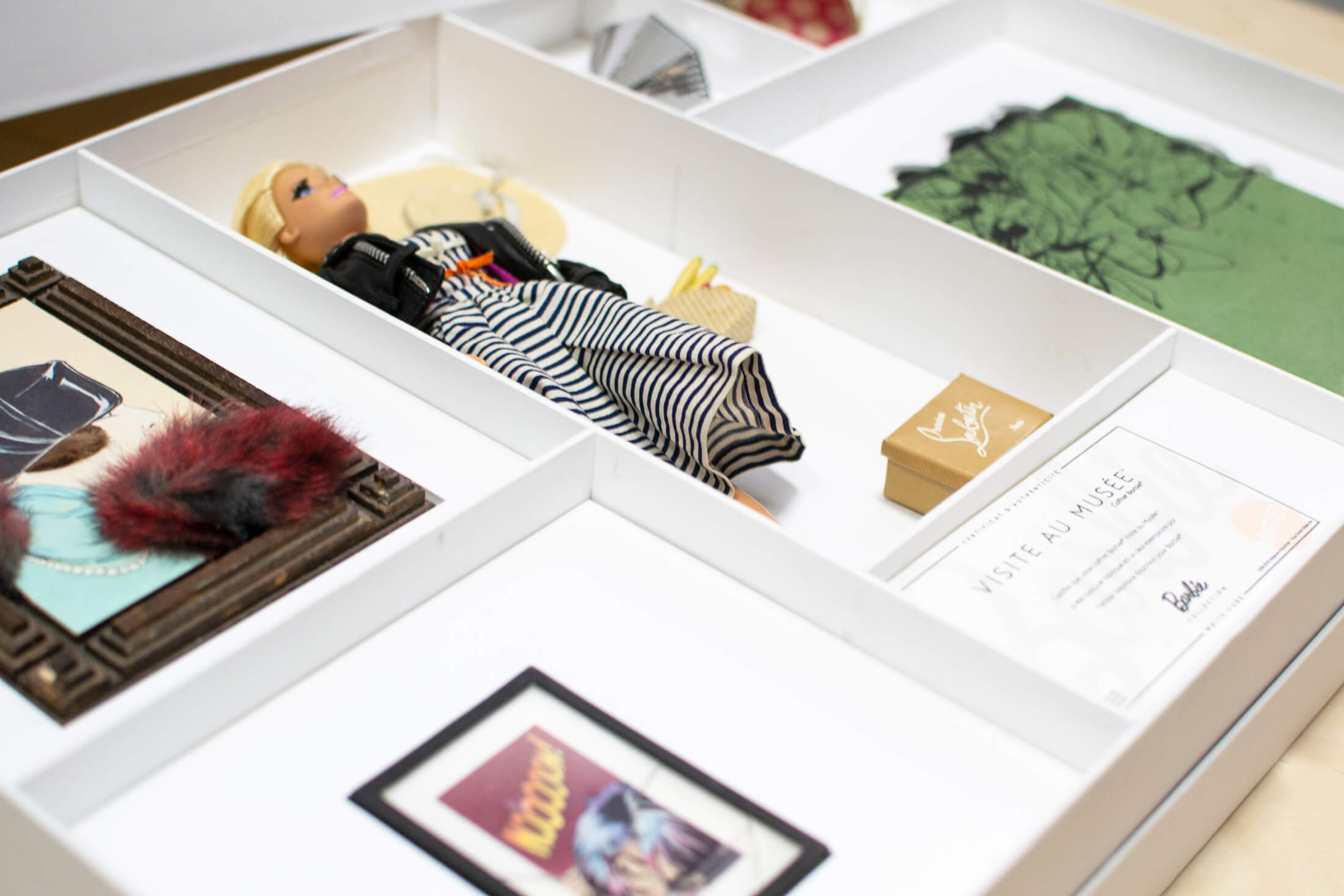
« Barbie, a visit to the museum », the title of Stéphane Kouchian's new project, sounds like a slogan. Kouchian uses his art to subvert the logic behind the famous Barbie doll set, which gets an updated version. Started in 2008 and conceived like a complete set, the work consists of several architectural or artistic elements that recreate a White Cube in an imaginary museum. In this small-scale museum space, the artist makes the icon his own, setting her against miniature versions of his own works.
From the Abécédaires series of paintings, which were inspired by the illustrations in Fisher Price's School Day Desk reading and writing learning toy, to Girafe, a monumental sculpture inspired by a Wakouwa toy (an articulated wooden toy, also called "push puppet") which becomes a toy again in that miniature version, the works of Stéphane Kouchian form a body of work marked by a constant change of scales. As the colors and materials are identical to their original versions, the meticulously handcrafted miniature works spell both craftsmanship and art, drawing unexpected links between his work and and the staging of it.
Indeed , most of Kouchian's works is about enlarging and transferring elements from the world of childhood to the world of art. That's the case for a series of gem puzzles with minimalist shapes and primary colors that, once enlarged, become geometrical abstractions whose each composition results from simple permutations. The same is true for the spilling pots in the ACME series, which reference Warner Bros' cartoons and patterned paintings, used by the characters to turn a wall into a tunnel, or to paint patterns on a clean surface.

Stéphane Kouchian's vividly pictorial paintings and sculptures hold a sort of conversation with Barbie, and the social representations the doll has conveyed throughout her long history. For subverting an icon like Barbie is no small thing, and here the artist uses the doll as the symbol of both a hyper-standardized beauty ideal, and a deep-seated American way-of-life.
Kouchian does not merely recreate Barbie's environment, he also gives her a voice, that of the doll's official French dubber, with whom he has collaborated in November 2014. The thirty recorded phrases she utters include quotes by the likes of Marcel Duchamp or Pablo Picasso, while the others, written by the artist, contain acerbic comments that are part schoolboy humor and part erudition.

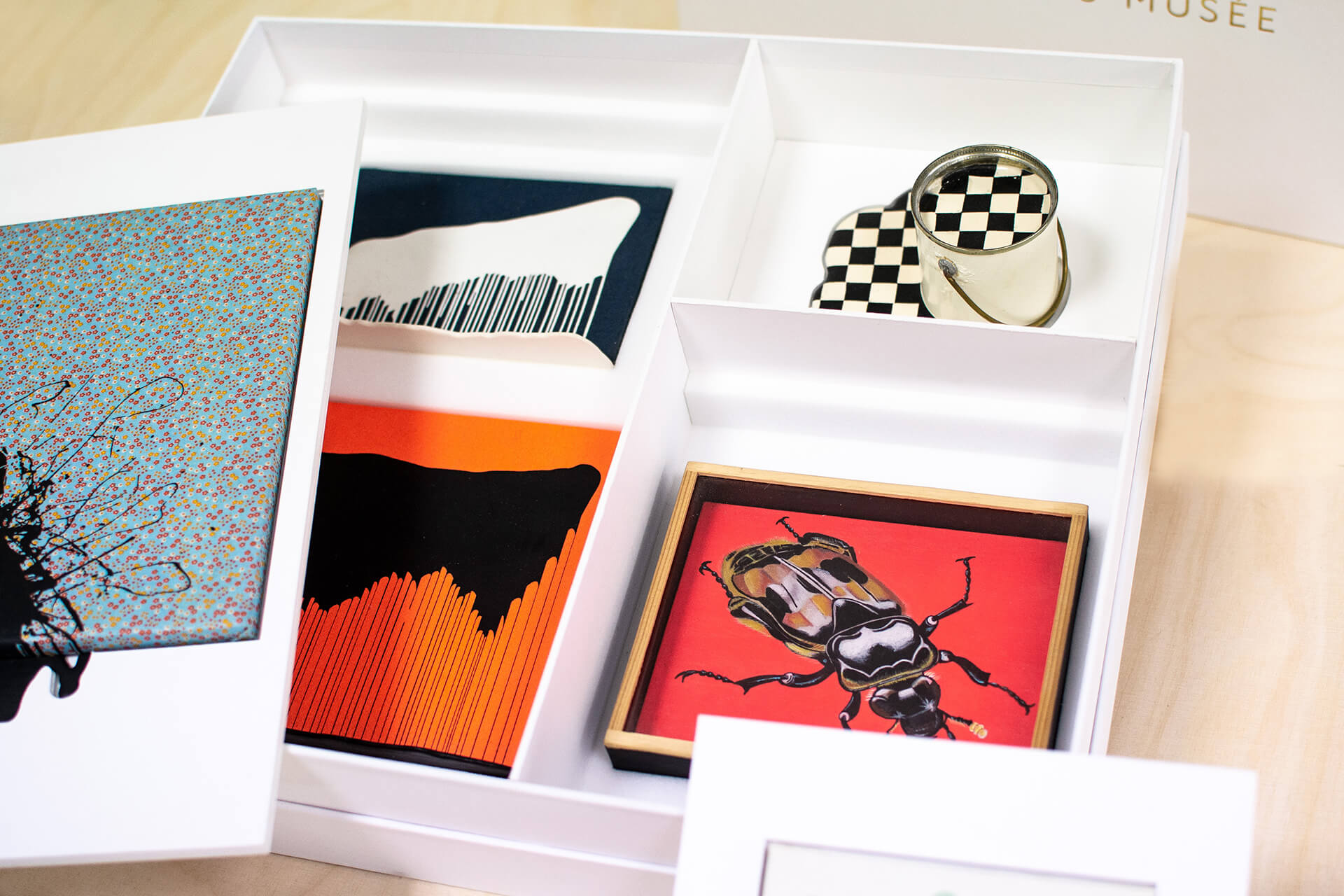
Coming out of the doll's body, the voice comments on the works hanging on the mini museum's walls saying utterly ironic sentences like "Andy must be rolling in his in his grave "or "It's much better than Jeff Koons". Barbie was indeed the ultimate American Idol, represented by Warhol in a celebrity portrait inspired by his artist friend BillyBoy*. In 1989, BillyBoy* in turn created the concept of "fashion doll as art" with the Mdvanii doll (pronounced "Mid-vah-nee"), dolls-cum-artworks for adults to which the sophisticated stage production of « Barbie, a visit to the Museum » could lay claim. By making Barbie the main character of this micro-fiction, Stéphane Kouchian highlight the theatrical dimension of her whole set, reminding us that in ancient Greece, the actresses that could not get on stage were sometimes represented by dolls, then called "Plangon" - a term which later gave its name to the French word "plangonophilie", which is the act of collecting dolls.


The spectator is invited not to look at Barbie, or the miniature works themselves, but rather at an artificial and didactic situation : here we are, contemplating a doll that is a spectator at a contemporary art exhibition. The artist offers by turn to identify with the doll, and to watch a situation he himself has experienced and observed : how do people look at contemporary art in museums?
By summoning the world of toys through his art object, Stéphane Kouchian questions the notions of transmission and learning, two recurring themes in his artistic work. To better highlight the scale game involved and the theatricality of the staging, Stéphane Kouchian's sculptures and paintings are to be regarded as "images squared" whose pictorial potential is exacerbated by the artist, the same way the doll can be perceived as the sum of the stereotypes it produces and conveys. That way, the artist questions the significance of imagination in our relationship to reality.
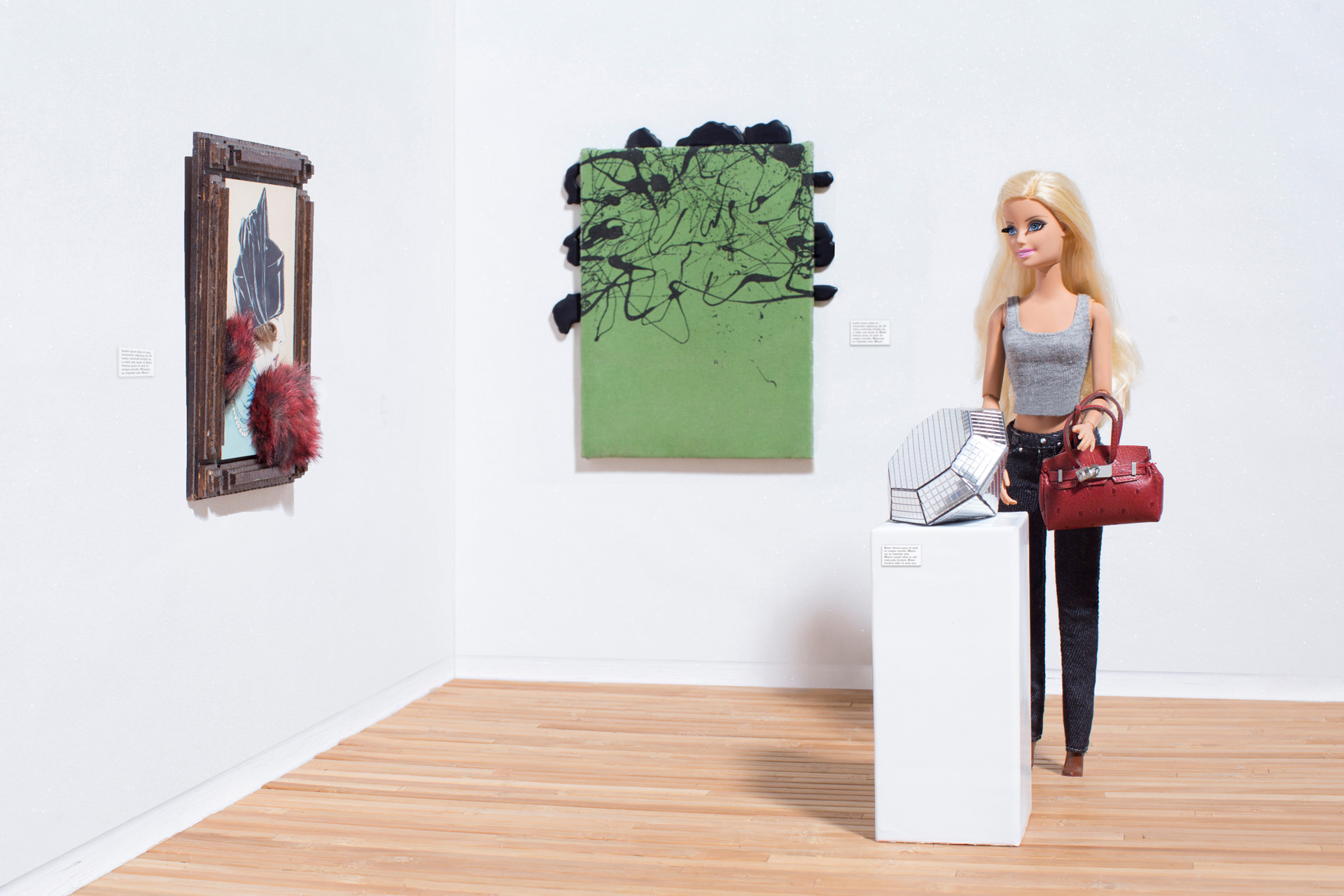
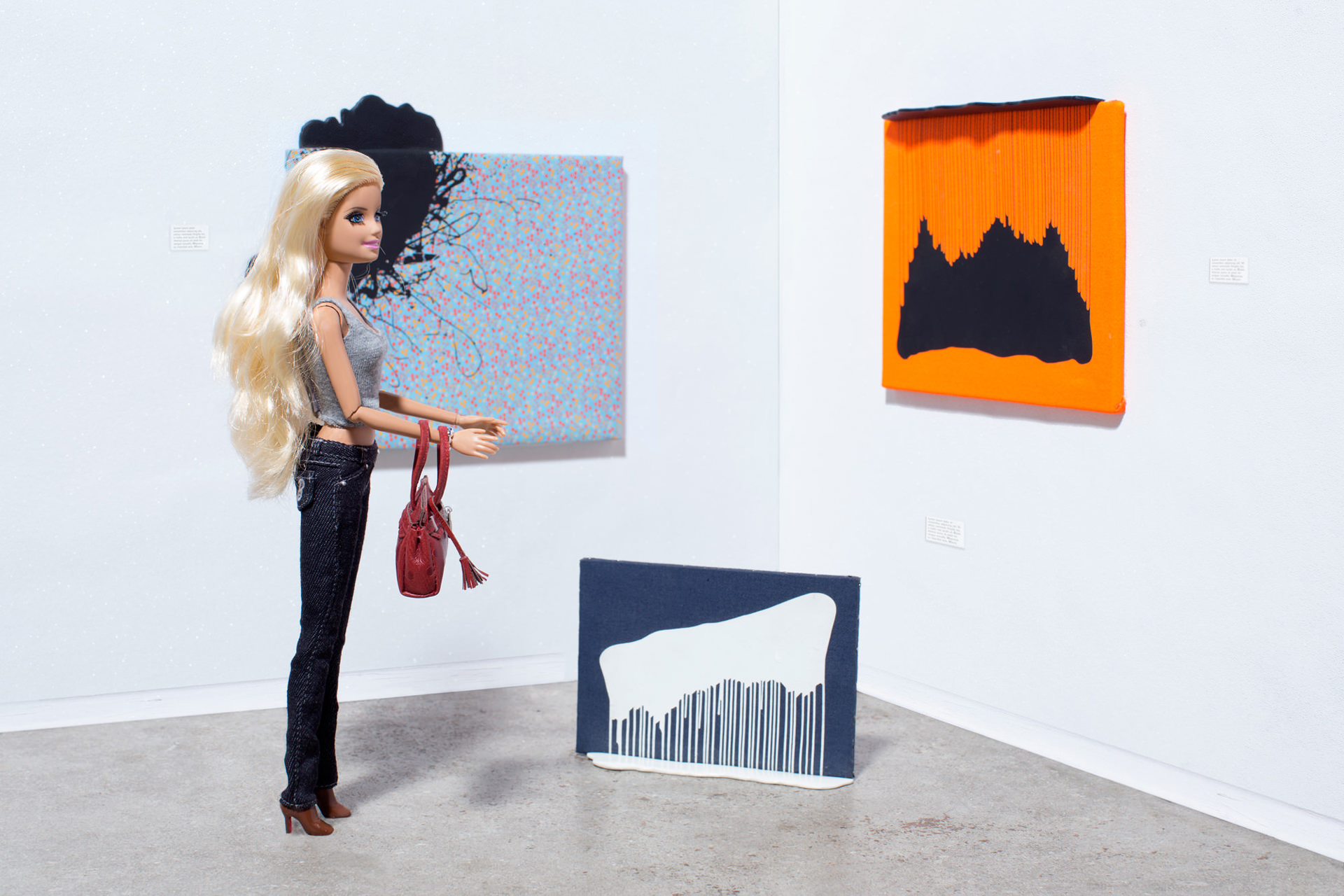
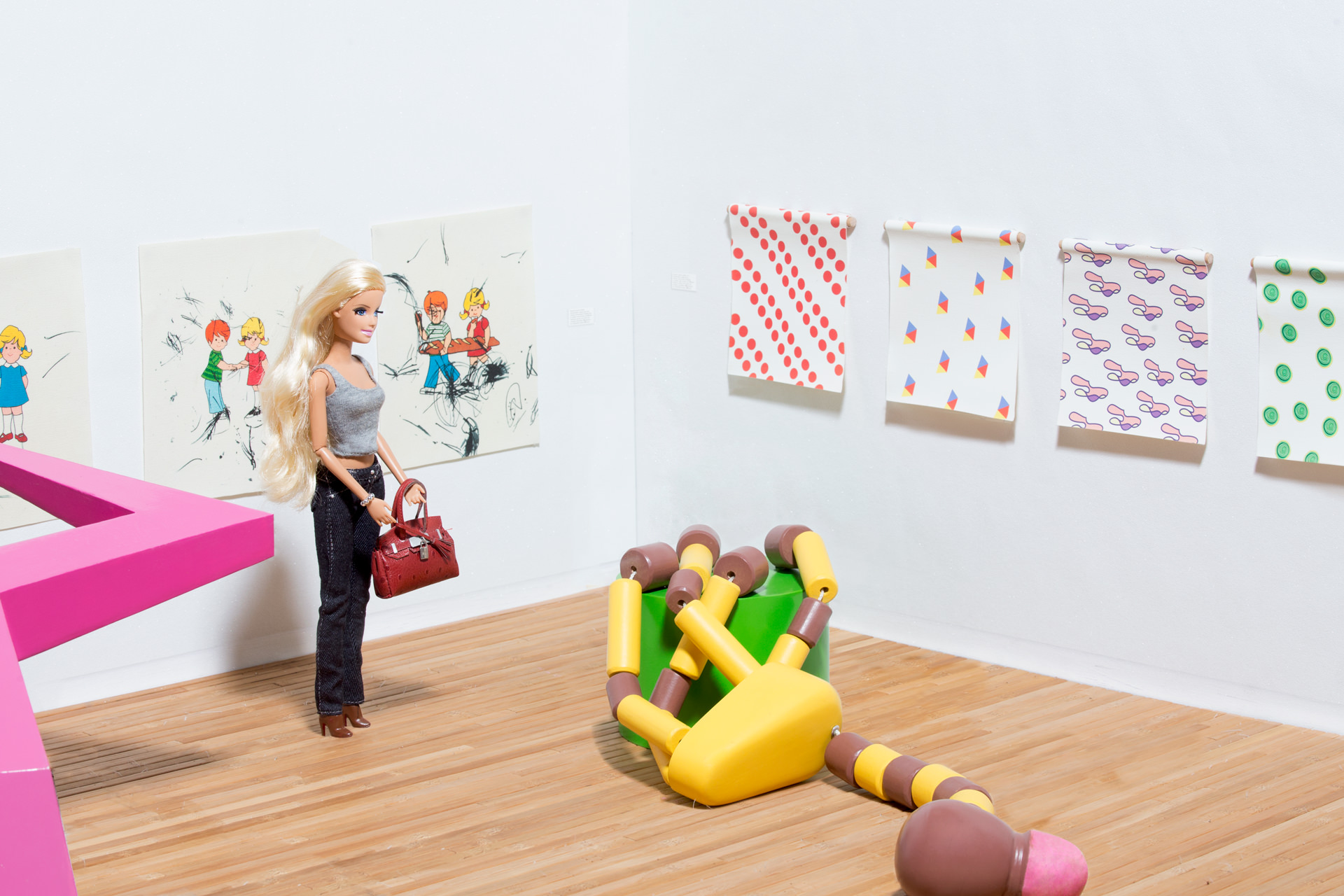
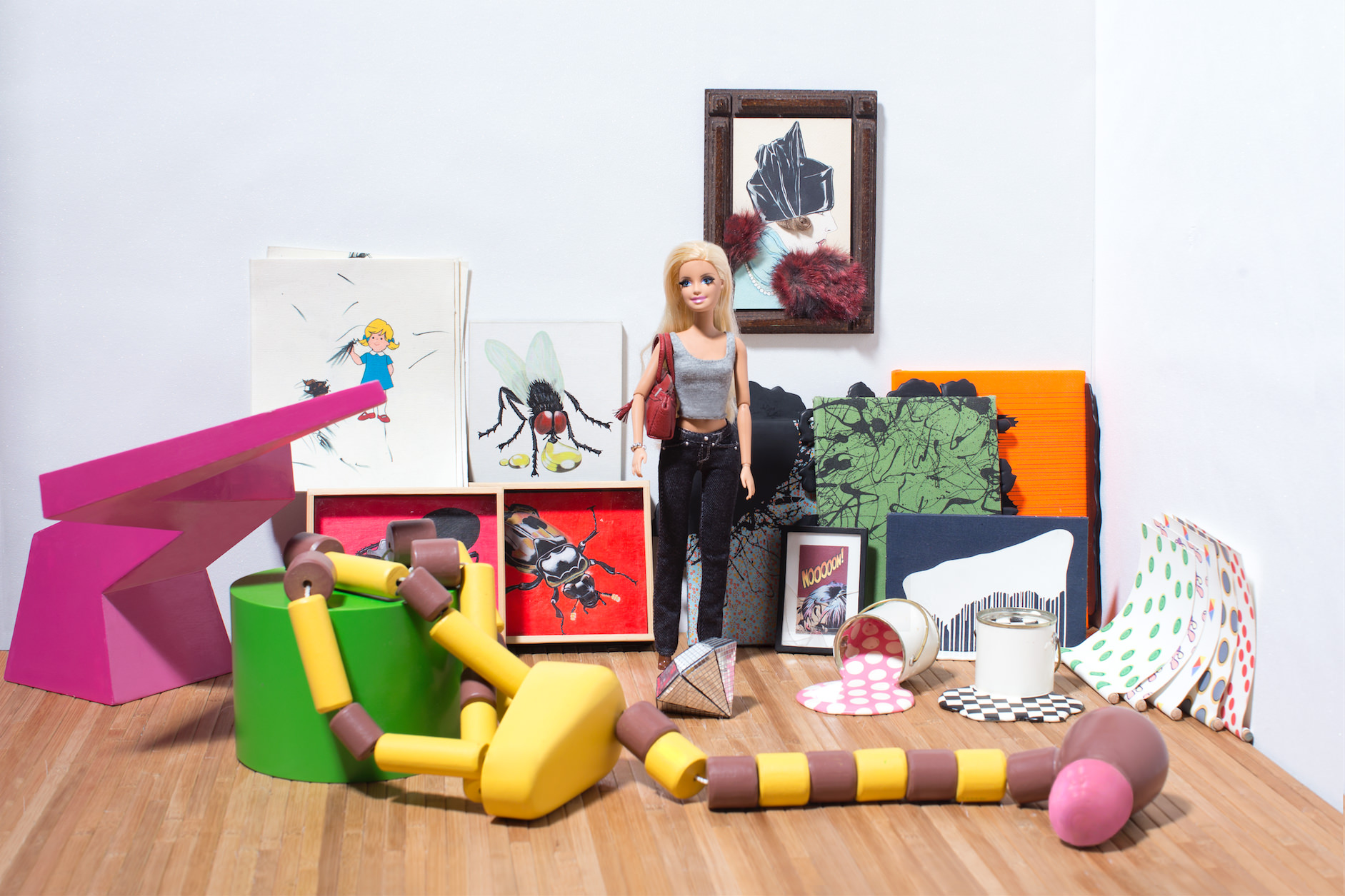
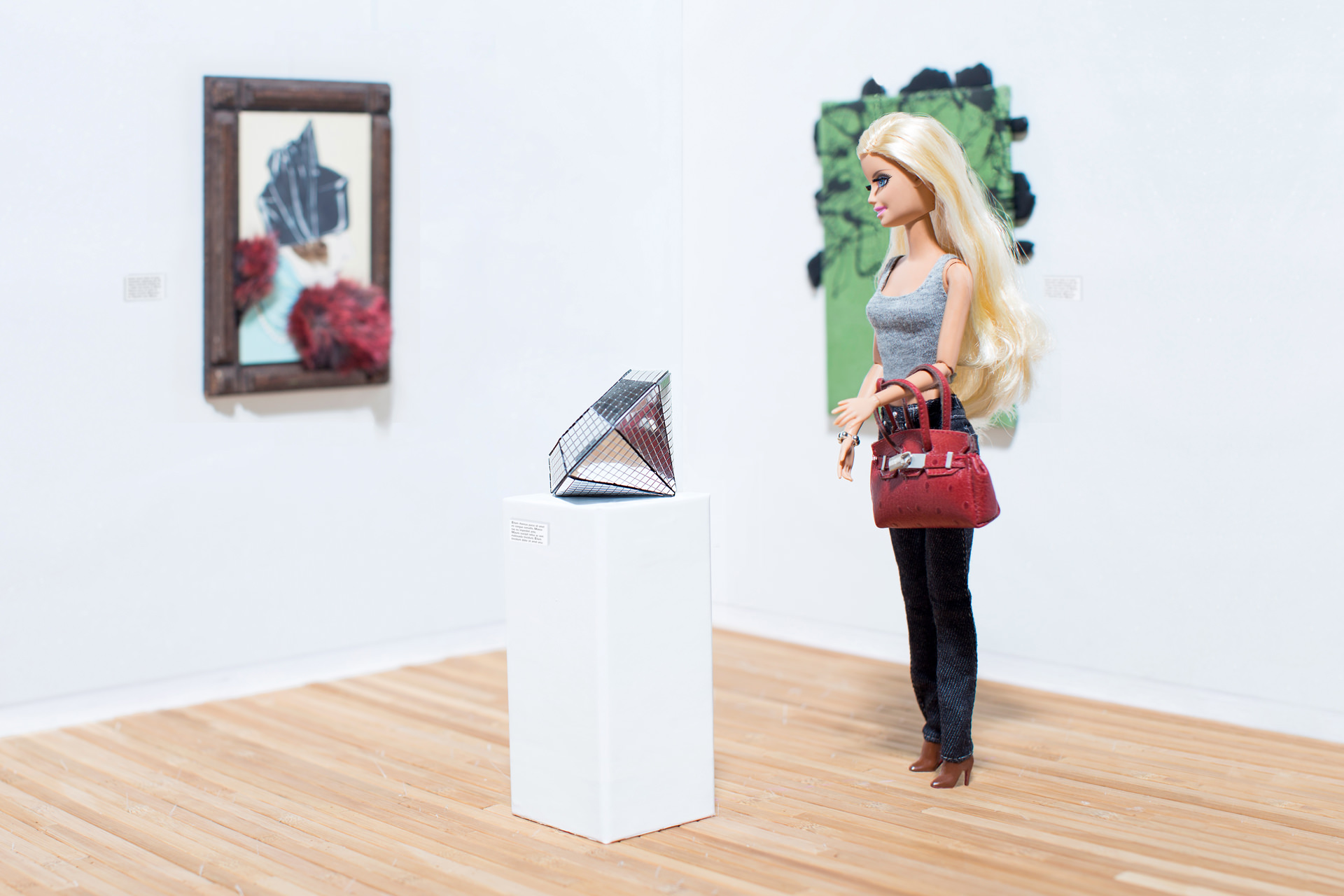
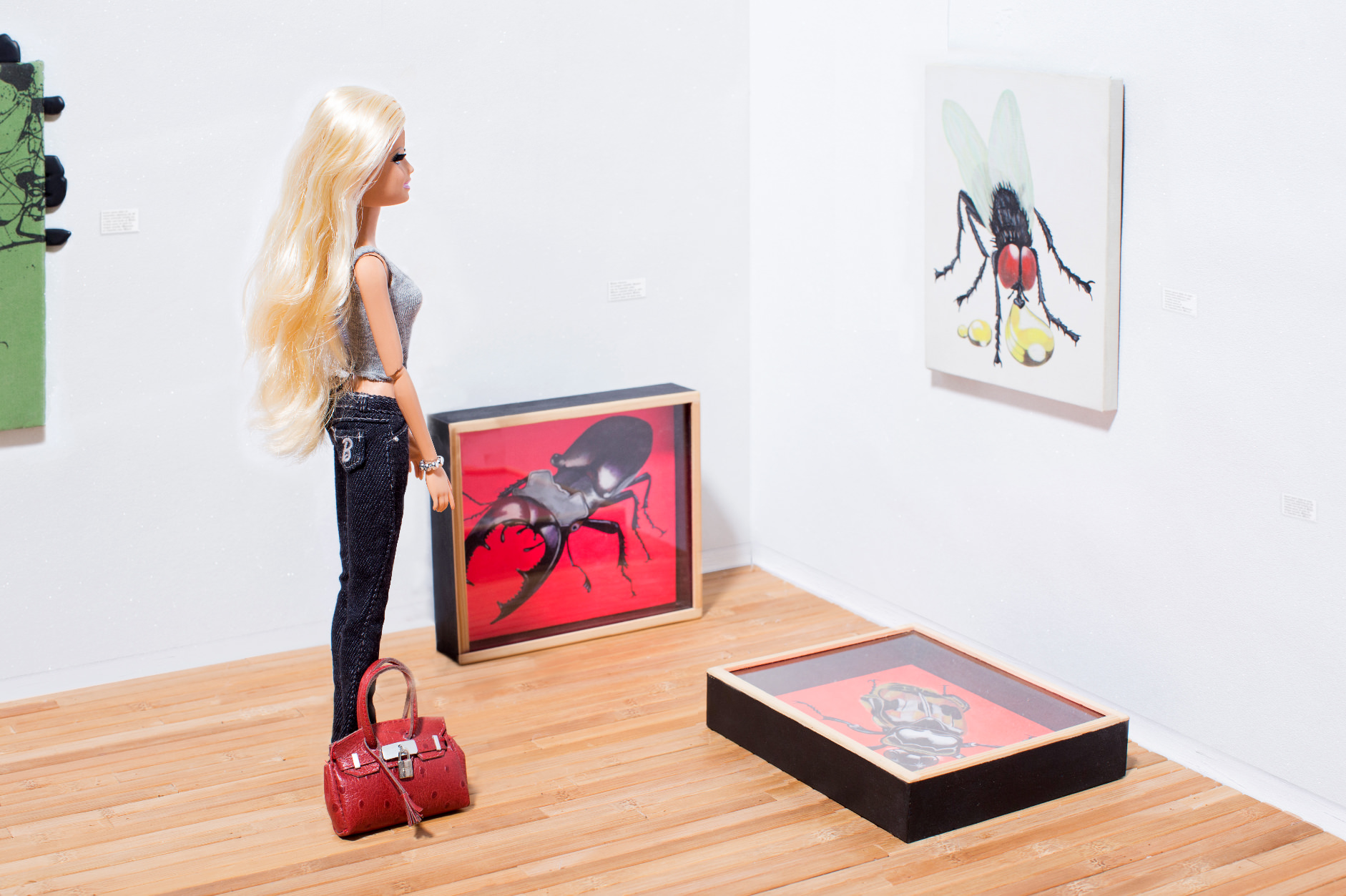
« Barbie, a visit to the museum » questions the pictorialism in the artist's œuvre and also acts like a commentary on this situation. For the artist, the use of his own body of work serves as a way to give the viewer keys to understanding the nature of art, while offereing a sort of mobile retrospective exhibition, which serves as an excuse to offer an all-encompassing view on his work.
The obvious pop culture reference allows him to make a statement about the perception of art outside museum spaces, and in places devoted to cultural mass consumption.
EC, january 2016.

WWW.STEPHANEKOUCHIAN.COM
|
CONTENT OF SET I
Noir sur vert Discowski Suicide Oups I did it again (ACME) Floritza La lucane cerf-volant (vie privée) série Abécedaire - 4 pièces série Cover-flow - 5 pièces Talking Barbie doll (with voice module and button in the back) robe rayée, perfecto Louboutin, fruity bag hat, phone, water bottle jean, débardeur, shoes basement, battery, manual, certificate |
CONTENT OF SET II
MD industry (ACME) Noir sur fleur Noir sur fluo Blanc sur bleu marine Le nécrophore (vie privée) La mouche (vie privée) manual, certificate
CONTENT OF SET III
Girafe manual, certificate |
-------------------------------------------
PUBLICATIONS ET EXHIBITIONS
July 1st to October 31st 2017.

Lire l'article en ligne.

Barbie, a Visit to the Museum - 2008/2016
www.stephanekouchian.com - contact